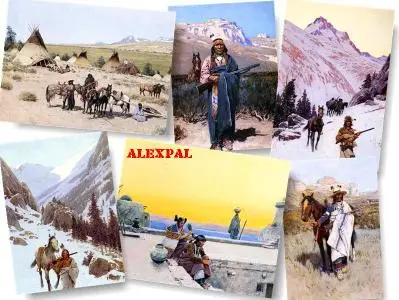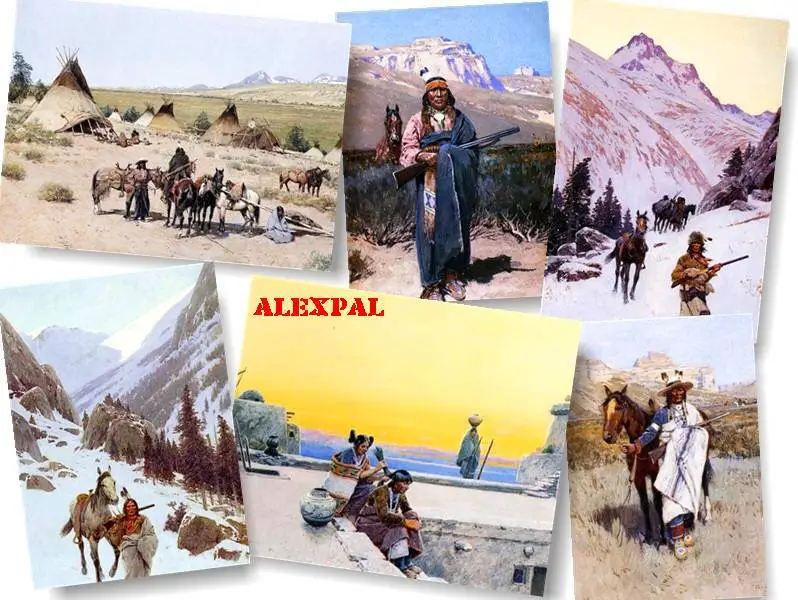Art by Henry F. Farny
22 JPG | up to 1200x800 | 3,7 Mb
22 JPG | up to 1200x800 | 3,7 Mb
Born in France, Henry Farny (1847-1916) immigrated to Warren, Pennsylvania with his parents and shortly thereafter settled in Cincinnati, Ohio, where he spent the remainder of his life. Following the path of earlier Cincinnati artists, Farny traveled to Europe studying first in Dusseldorf and then in Munich.
In Dusseldorf, Farny not only acquired the technical skills of the local masters but also made the acquaintance of Albert Bierstadt who encouraged him to travel to the American West. Farny's stay in Munich introduced him to the bravura brushwork and dark, moody palette of Frank Duveneck the preeminent American artist working in southern Germany at that time. The training Farny received in Europe provided him with the most advanced and sophisticated ideas of the late nineteenth century and separated him from many of his contemporaries who chose to depict the West and the Native American as their subject.
After returning from travel and study abroad, Farny made his first trip to the West in 1881, presumably to witness the capture of Sitting Bull. Arriving after the removal of Sitting Bull from Fort Yates along the Missouri River, Farny stayed on and became an active participant in the social life of the Plains Indians who lived near the fort. (D.M. Carter, Henry Farny, New York, 1978, p. 21) Farny returned to the West in 1883 and 1884 in order to witness the final laying of the Northern Pacific Transcontinental Railroad and to illustrate an article for Century Magazine. During repeated visits to the West in the early 1890s, Farny gathered materials for the oil paintings and gouaches he would later complete in his Cincinnati studio. Collecting artifacts and props from the Indians he came to know affectionately, Farny recreated, and often repeated, scenes and events he witnessed on the Plains and in the mountains. Aided by on site sketches and photographs both taken and purchased, Farny had gathered sufficient material and firsthand experience to paint the Native Americans of the American West in a sympathetic and lasting fashion. In contrast to many of Farny's contemporaries who employed unnatural effects of light and atmosphere, with explosions of action and spirit to create drama and emotion, Farny succeeded in portraying these sentiments with a unusual subtlety and harmony, ultimately more in keeping with reality
Download from Easy-Share
or
Download from Depositfiles
or
Download from Rapidshare
My Graphics Blog: Welcome!
No MIRRORs below!
or
Download from Depositfiles
or
Download from Rapidshare
My Graphics Blog: Welcome!
No MIRRORs below!



